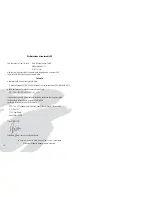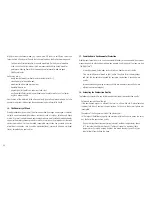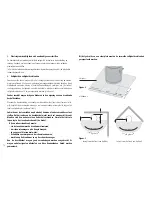
55
3. Installation
Check to make sure that the load-bearing capacity of the fl oor / installation surface is suf-
fi cient. If necessary, using a fl oor plate to distribute the load can increase the load-bearing
capacity.
In addition, check whether the room in which the Toronto is to be installed is suffi ciently
supplied with fresh air. If the windows and doors are tightly sealed, the necessary supply
of fresh air may not be ensured, which can interfere with the draught capability of the
stove and chimney. If additional combustion air inlet openings are required, they are not
permitted to be closed or obstructed.
Simultaneous operation of the stove and the exhaust hood can cause negative pressure to
build up in the room where the stove is installed, which can lead to problems such as fl ue
gas escaping from the stove.
To ensure that air is not drawn out of the room where the stove is installed, we recommend
locking exhaust hoods that guide the air to the outside by means of a window contact
switch.
4. The
Chimney
The Toronto has to be connected to a suitable chimney with a minimum effective chimney
height of 4.50 m. The chimney cross section should correspond to the fl ue pipe cross sec-
tion. If the effective chimney height is too low and/or the chimney cross section is too large
or too small, the draught capability of your stove can be impaired.
The Toronto stove requires a 12 Pa output pressure (chimney draft). At higher output pres-
sures, the stove emissions increase, which puts a high load on the stove and can lead to
damage. The Toronto stove has a maximum permissible output pressure of 25 Pa.
To limit the output pressure, a butterfl y valve or output pressure limiter can be used.
The Toronto may only be operated when the fi re box door is closed and has to be con-
nected to its own separate, suitable chimney.
5. Flue Pipe Connection
The Toronto has to be connected to the chimney with a fl ue pipe having an inside diameter
of 180 mm. Please ensure a tight fi t of all pipe pieces at the connection junctions. The pipe
must be well sealed in the chimney entrance and cannot project into the inner cavity of the
chimney; otherwise the fl ue venting will be impaired.
6. Butterfl y Valve
The butterfl y valve is an optional control element. It is fi tted in the fl ue pipe and used to
regulate the fl ue gas fl ow, and can thus slow down the burning-off process. When the
handle‘s position is diagonal to the fl ue pipe, the fl ue gas fl ow rate is turned to minimum.
We strongly recommend the installation of a butterfl y valve to reduce the output pressure.
Please consider the country-specifi c statutory regulations.
















































